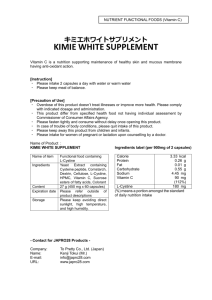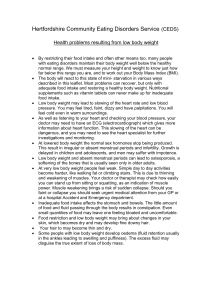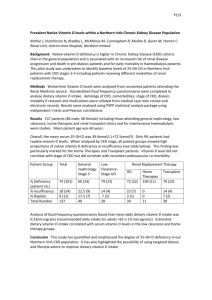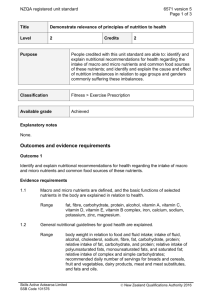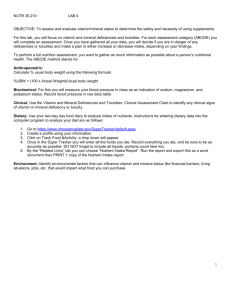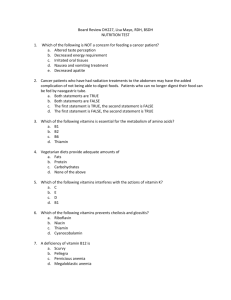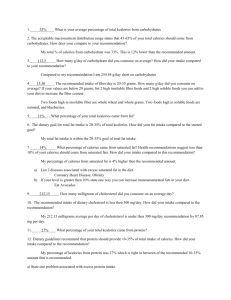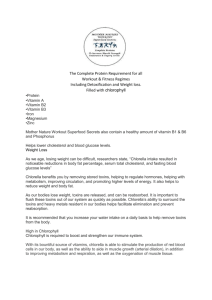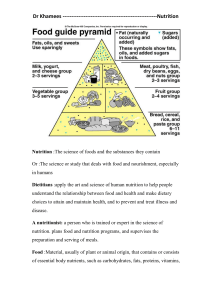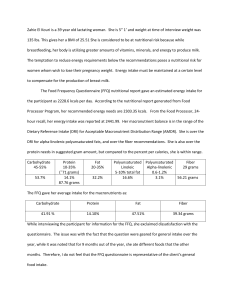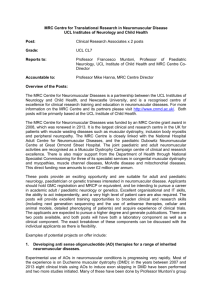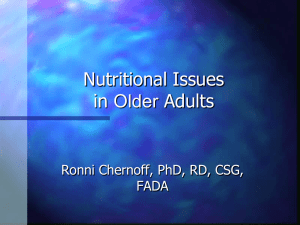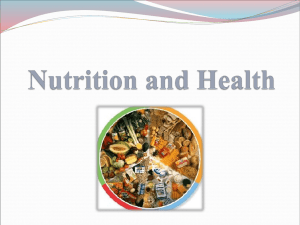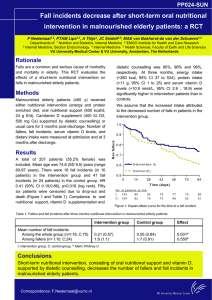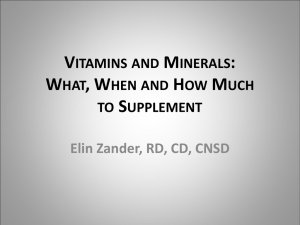Diet in Neuromuscular Disorders
advertisement
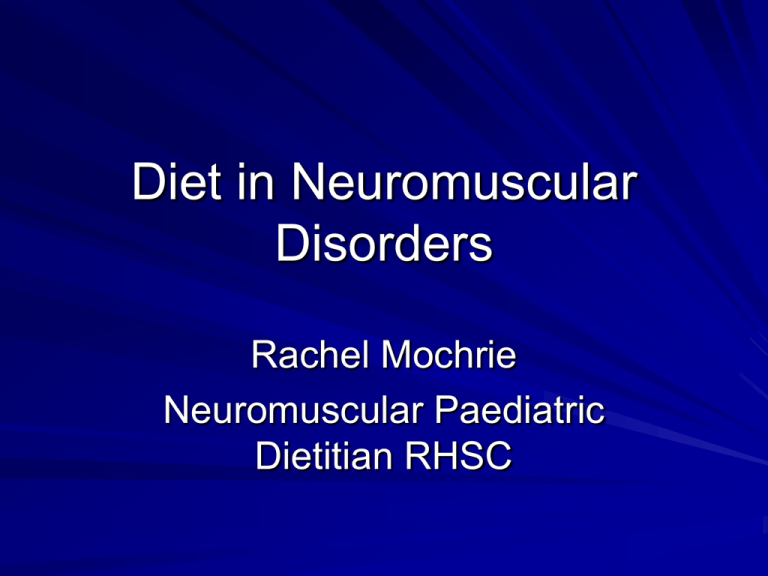
Diet in Neuromuscular Disorders Rachel Mochrie Neuromuscular Paediatric Dietitian RHSC Common Symptoms in NM Diseases Reduced or increased muscle tone Progressive muscle weakness worsening with activity Spasms Myalgia And in conditions such as DMD eventual loss of ambulation Swallowing and respiratory problems Main Aims of Management Improvement of symptoms Prevention and treatment of complications such as Spinal deformity, respiratory complications and cardiomyopathy Minimise the impact of complications to maximise quality of life Nutritional Assessment Weight Problems may occur if there is no appropriate equipment available e.g. sit on scales, wheelchair beams e.t.c. Weight should be measured at each clinic visit or more frequently if any concerns Assessment - Height/Length Wherever possible a standing height or supine length should be taken. It is often difficult to obtain a height or length for children This can be due to the child’s leg contractions and / or inability to stand or lie straight. Alternative Height Measurements In Neuromuscular disorders -Ulna length – Specialist Anthropometer Arm span Assessment – Dietary Intake 24hr recall Diet History Recorded intake Food diary Observation Barriers to an adequate intake/nutritional status Increased work of breathing, respiratory failure, gastric dysmotility, constipation/ diarrhoea Post surgery e.g. Spinal Psychological aspects- aversion/ inability to self feed/ reluctance for assistance Chewing /swallowing difficulties – joint review with Speech Therapist Advice Establishing regular meals + appropriate eating pattern Encouraging small, frequent meals and nutritious snacks Advice on appropriate food textures/ thickening agents Practicalities of eating –manage seating/wheelchairs/arm rests Food Fortification Optimise intake Behavioral modification Dairy products Fats + Oils Supplements 0-1yr High Energy infant formula 1-3yrs (8kg) Paediatric sip feeds +/- Fibre >3yrs Paediatric sip feeds +/- Fibre Adult sip feeds milk/juice based +/- Fibre Supplements Useful to improve/maintain calorie intake in some children Important not to displace food Monitor use to ensureSupplements are being taken Oral intake is not compromised Discontinue as soon as possible Tube feeding- Indications Inability to suck or swallow Anorexia associated with chronic illness Increased requirements Congenital anomalies Primary disease management Clinical Paediatric Dietetics 3rd Edition Tube Feeding – Gastrostomy Support nutritional intake Early decisions regarding placement may prevent further deterioration, reverse faltering growth and reduce stress and anxiety around eating with the family Weight Management Excessive weight gain is also common Early intervention important Appropriate portion control Reduction of high fat/ high sugar foods and drinks Increasing fruit and vegetable intake Use of Steroids e.g. In DMD can lead to rapid weight gain and an increased appetite Bone Health Increased risk of bone disease Due to lower activity levels Use of long term corticosteroids (DMD) Low vitamin D levels- limited sun exposure Dietary sources of vitamin D – fortified margarines/fortified cereals/oily fish Vitamin D status monitored closely Vitamin D Status Serum 25-OHD concentration Vitamin D Status <15nmol/l 15-30nmol/l 31-50nmol/l >50nmol/l Severe Deficiency Deficiency Insufficient Adequate Bone Health Insufficiency and deficiency treated with oral Calciferol Early Intervention and prevention is key In RHSC we advise optimal dose of Vitamin D 800 iu Routine use of Bisphosphonates in children with NM conditions? A Team Approach to optimising Nutrition The child should be assessed by a multidisciplinary team, e.g. Dr, Physiotherapist, SALT, Psychologist and a Dietitian. References Miller F, Koreska J(1992). Height measurement of patients with neuromuscular disease and contractures.Developmantal Medicine and Child Neurology;34:55-60 Ramelli,et al (2007).Gastrostomy placement in paediatric patients with neuromuscular disorders: indications and outcomes. Developmental Medicine and Child Neurology;49:367-371 Davidson ZE, Truby H (2009).A review of nutrition in Duchenne muscular dystrophy. Journal of Human Nutrition and Dietetics;22 :389-393 Bushby K (2005).The Multidisciplinary management of Duchenne muscular dystrophy. Current Paediatrics;15:292-300 Pearce SHS, Cheetham TD(2010).Diagnosis and management of vitamin D deficiency. British Medical Journal;340:142-147 Questions?
